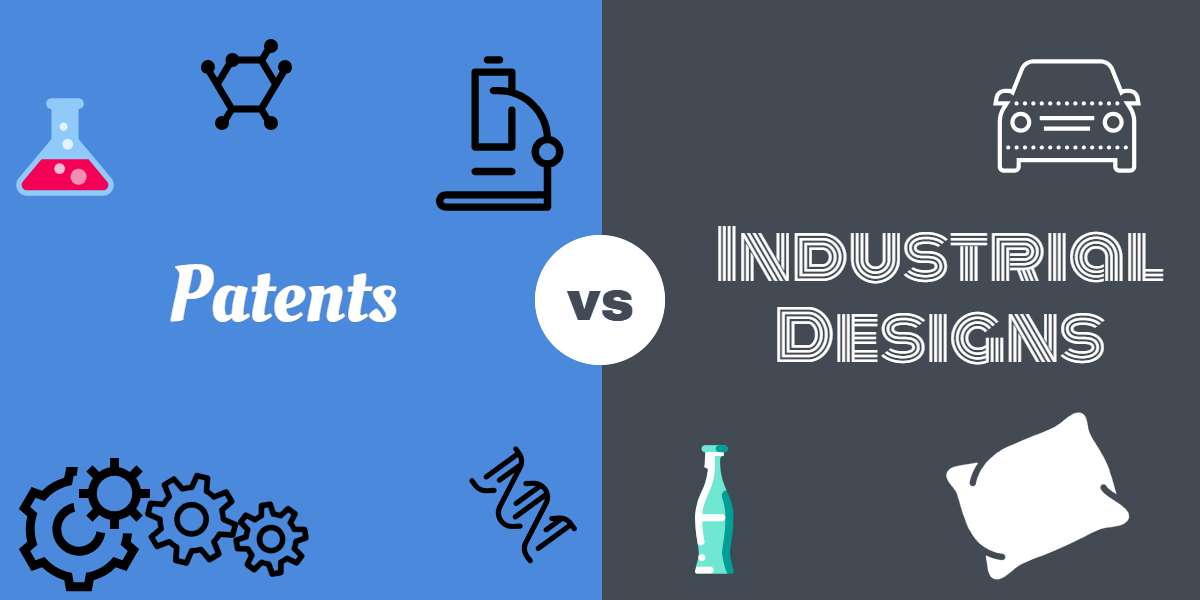Patents and Industrial Designs are both subsets of Intellectual Property Rights, along with Trademarks, Copyrights, Geographical Indicators, etc. Although these two types of Intellectual Property Rights are very distinct in nature, many tend to confuse the two. According to the World Intellectual Property Organization (WIPO), patents are an “exclusive right granted for an invention, which is a product or a process that provides, in general, a new way of doing something, or offers a new technical solution to a problem.” Patent rights are granted to an inventor, by the government, and it permits such inventor to exclude others from making, selling, or using their scientific invention, or a technological advancement, for a period of time.
Industrial Designs, on the other hand, refer to the shape, configuration, pattern or ornament or composition of lines or colour or combination thereof applied to any article whether two dimensional or three dimensional, by any industrial process or means, whether manual, mechanical or chemical, separate or combined, which in the finished article appeal to and are judged solely by the eye. The design of a product, along with providing an attractive character to the article, provides and promotes economic development by acknowledging and encouraging creativity in the manufacturing or industrial sector.
Although the line may seem very thin, a design protection is very different from a patent. To offer a clearer understanding, let’s say you are asked to go to the market and fetch a bottle of Fanta and Coke. Would you be able to differentiate the two bottles by just looking at them? In all likelihood, Yes! What probably helps you differentiate the two drinks is the shape of the bottle they are sold in. The shapes of the said bottles are the subject of design protection. The drinks i.e. their formulation on the other hand would be the subject of patent protection.
What probably adds to the confusion and blurs the distinction between patents and designs is the fact that a number of people come across and hear the words design patent. What they fail to realize is that design protection in the US is also referred to as a design patent and yet it is not a patent. In India, design protection is also referred to as design copyright. You see where the confusion comes from?
Having said that, patents are registered for protection of new “inventions”, this means that the focus while registering a patent would be on its functionality and content, not its appearance or aesthetic value. Despite the fact that most often, the case may be that the design of an article is directly contributing to its function, or vice-versa, the design protection as such only extends to that of its aesthetic features, not its function. The purpose of design law is not to reward advances in function, such advances in function come under patent law. The designs act shows predominance and pre-eminence of the aesthetic elements over the functional elements of an article.
Further, these two types of Intellectual Property are governed by separate statutes in India. Patents are governed by that Patent Act, 1970 as amended by the Patents (Amendment) Act, 2005 and the Patents Rules, 2003. Whereas, industrial design are governed under the Designs Act, 2000. Both patents and industrial designs are registered through the Office of the Controller General of Patents, Designs & Trademarks. While patent rights are usually granted for 20 years from the filing date of the application, industrial design rights are granted for an initial period of 10 years, and can be later extended for another 5 years.
The table below will provide you with a quick understanding on how to distinguish between patents and designs.
|
Particulars |
Patents |
Designs |
| What is protected? | Technical features / Inventions involving scientific elements | Aesthetic appeal / How a product looks from the outside / External features |
| Flexibility of parameters | Strict | Not very strict |
| Factors considered | 1. Novelty 2. Usefulness / Utility / Industrial Applicability 3. Non Obviousness |
1. Novelty 2. Originality |
| Duration of protection | 20 years | 10 years + 5 years |
| Some Examples | Formulation of a beverage such as coke ; A method of manufacturing a bottle , etc | Shapes of bottles, patterns applied on a cloth or crockery, etc |
| Cost of protection | Very high | Low |
| Governing Statutes | Patents Act, 1970 and Patent Rules, 2003 | Designs Act, 2000 and Design Rules, 2001 |
| Average duration to secure rights | 3 to 4 years after filing a request for examination.* | 1 to 1.5 years |
* A patent applicant is given 4 years from the date of filing a patent application to file a request for examination. After filing of this request, it usually takes 3 to 4 years for the application to be examined and granted.
The next time somebody tells you that you should consider getting a patent for your design, please do correct them unless they are talking about securing rights in the US.
Authored by Namitha Saju and Gaurav Mishra



